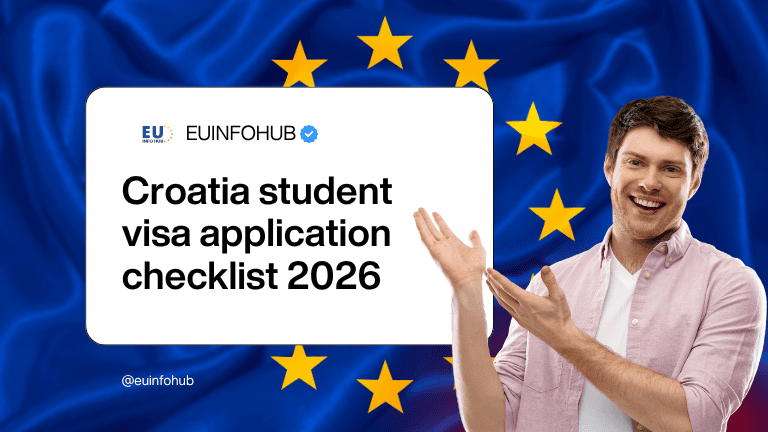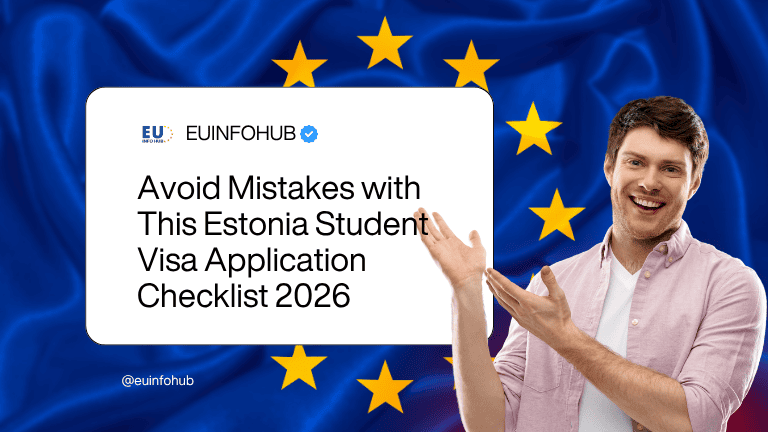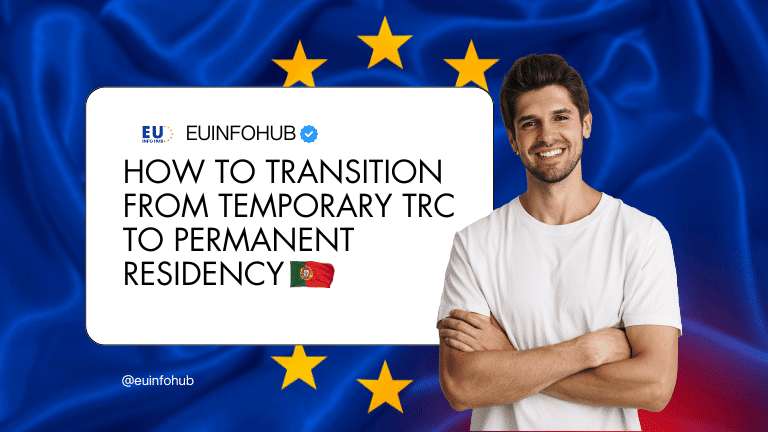In this Malta student visa application checklist 2026 guide, you’ll find clear, step-by-step tips for securing your study permit in Malta. If you’re researching European student permits, this friendly overview will help you avoid stress, meet deadlines, and gather everything you need.
By the end of this ultimate guide you’ll know exactly which forms, documents, and dates to track—promise. Let’s walk through each phase so you can focus on packing, not paperwork.
Understand visa requirements
Before you dive in, let’s clarify which permit you actually need. Do you know if your program counts as a short stay or long stay?
Long-stay D-visa basics
Students from non-EU/EEA countries enrolling in courses over 90 days need a long-stay D-visa. As of March 2024 all third-country nationals (TCNs) must apply for this visa if they plan to study beyond three months (University of Malta).
Short-stay C-visa overview
If your program is under 90 days—think summer courses or short internships—you’ll apply for a short-stay C-visa (Schengen). It covers study and leisure but not longer degree programs.
EU versus non-EU applicants
EU citizens don’t need a study visa, but if your course runs more than 90 days you must register with Malta’s Department of Citizenship and Expatriate Affairs (GlobalCitizenSolutions). Non-EU citizens get the D-visa, plus a temporary residence permit on arrival.
Check eligibility criteria
Meeting eligibility requirements early saves headaches. What qualifies you to apply?
Admission and program acceptance
You need an unconditional acceptance letter from your Maltese institution. Double-check that it covers the full duration of study and is signed or stamped.
Financial proof requirements
Show you can cover living costs of at least €950 per month. Your bank statement or a sponsorship letter must reflect this balance for every month of stay (University of Malta).
Health and character checks
You’ll need travel insurance that covers medical emergencies, trip cancellations, and more. Plus, a clean criminal record is essential—no loose ends there.
Gather essential documents
Here’s where you collect all your paperwork. Missing one item can delay your D-visa.
| Document | Details | Tips |
|---|---|---|
| Valid passport | Must be valid for at least 3 months beyond your stay | Check expiry before you book travel |
| Acceptance letter | Official letter from your university | Keep both digital and printed copies |
| Proof of funds | Bank statements, pay stubs, or sponsorship letter | Include 6 months of statements |
| SELT qualification | Secure English language test result by deadline | Non-EU students had July 1 deadline in 2025 (UM) |
| Passport-style photos | Two recent photos meeting Schengen standards | Follow photo guidelines exactly |
| Travel insurance policy | Coverage for at least €30,000 medical expenses | Print policy schedule |
| Educational transcripts | Secondary or tertiary transcripts, if applicable | Translate to English if needed |
| Visa application form | Completed and signed D-visa form | Use black ink and print clearly |
Wondering if you need any extra papers? Some consulates ask for a return flight itinerary or proof of accommodation. Always verify local requirements.
Submit your application
Time to tackle the online portal. One small typo can cost you weeks.
Accessing the online portal
Head to Malta’s official visa site and create an account. You’ll fill in personal details, your course info, and upload scans.
Filling out the form correctly
Use your passport data exactly as it appears. Mismatched names or numbers are a quick way to get flagged.
Uploading supporting files
Combine multi-page documents into single PDFs. Label each file clearly, for example “BankStatement_July2026.pdf.”
Pay visa fees
Your application isn’t complete until you’ve paid. How much should you expect?
Fee schedule
- Short-stay C-visa: around €80
- Long-stay D-visa: approximately €120
Fees can vary slightly by consulate. Confirm the exact amount before payment.
Payment methods
Most embassies accept credit/debit cards or bank transfers. Some also take cash—call ahead to avoid surprises.
Schedule your appointment
After you submit and pay, you’ll book a slot for your biometrics and interview.
Booking with the consulate
Log back into the portal or contact the nearest Maltese mission. Slots fill fast in spring and summer.
Timing recommendations
Aim to book at least six weeks before your intended travel date. This buffer covers delays in processing time, which can extend to 8–9 weeks in peak season (GlobalCitizenSolutions).
Attend visa interview
Nervous? A little prep goes a long way.
Common interview questions
- Why did you choose Malta?
- How will you fund your studies?
- What are your plans after graduation?
Interview preparation tips
Dress smart-casual, bring original documents plus copies, and arrive early. Speak clearly, be honest, and keep answers concise.
Track your application
You don’t have to wait in the dark.
Processing timelines
Standard review takes around four weeks, but it can stretch to 8–9 weeks in some cases (GlobalCitizenSolutions).
Checking status online
Use your portal dashboard or reference number to see updates. You’ll get an email when a decision is made.
Apply residence permit
If your program runs beyond one year, you’ll need a residence permit once you arrive.
When to apply
Submit your permit application within the first 90 days of arrival, or upon entry if you only held a 91-day D-visa.
Renewal requirements
Renewing means re-submitting bank statements showing €950 per month, plus any updated acceptance letters and insurance proof (University of Malta).
Special cases
If you already hold a long-stay D-visa or Schengen residence permit from another country, you may enter Malta visa-free and apply for your permit after arrival.
Avoid common pitfalls
Even a friendly guide can’t prevent every slip-up. Still, these tips help.
- Double-check every field before submission
- Confirm you meet insurance coverage limits
- Translate any non-English documents accurately
- Provide clear proof of funds for every month
- Don’t miss deadlines—plan ahead
For more on where applications tend to go wrong, see our common mistakes on student visa applications.
Explore country checklists
Planning studies elsewhere in Europe? Check these sibling guides:
- Austria student visa application checklist 2026
- Belgium student visa application checklist 2026
- Bulgaria student visa application checklist 2026
- Croatia student visa application checklist 2026
- Cyprus student visa application checklist 2026
- Czech Republic student visa application checklist 2026
- Denmark student visa application checklist 2026
- Estonia student visa application checklist 2026
- Finland student visa application checklist 2026
- France student visa application checklist 2026
- Germany student visa application checklist 2026
- Greece student visa application checklist 2026
- Hungary student visa application checklist 2026
- Ireland student visa application checklist 2026
- Italy student visa application checklist 2026
- Latvia student visa application checklist 2026
- Lithuania student visa application checklist 2026
- Luxembourg student visa application checklist 2026
- Netherlands student visa application checklist 2026
- Poland student visa application checklist 2026
- Portugal student visa application checklist 2026
- Romania student visa application checklist 2026
- Slovakia student visa application checklist 2026
- Slovenia student visa application checklist 2026
- Spain student visa application checklist 2026
- Sweden student visa application checklist 2026
- Or browse our general student visa application checklist for more options
Review key takeaways
- Identify whether you need a short-stay C-visa or long-stay D-visa
- Meet deadlines—July applications for October intake are common (UM)
- Gather all required docs, from acceptance letter to SELT proof
- Submit online, pay fees, book your appointment, and prepare for the interview
- Apply for your residence permit within 90 days of arrival
Ready to start your application? Gather your papers today, bookmark the official visa portal, and get one step closer to Maltese sun and sea. Good luck, and feel free to share your tips in the comments below!
















2 thoughts on “Your Friendly Guide to the Malta Student Visa Application Checklist 2026”